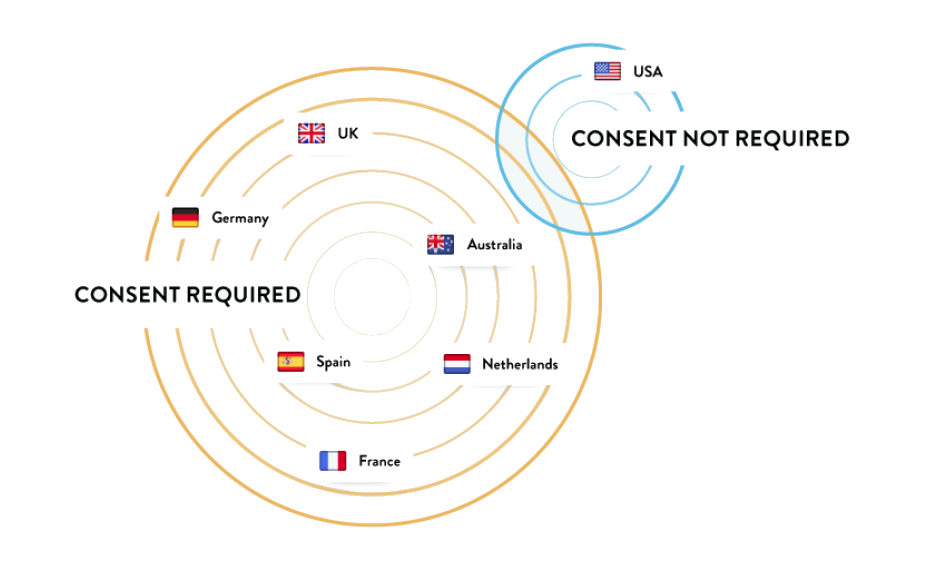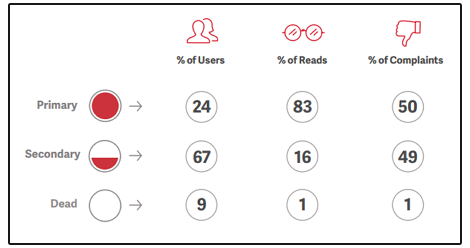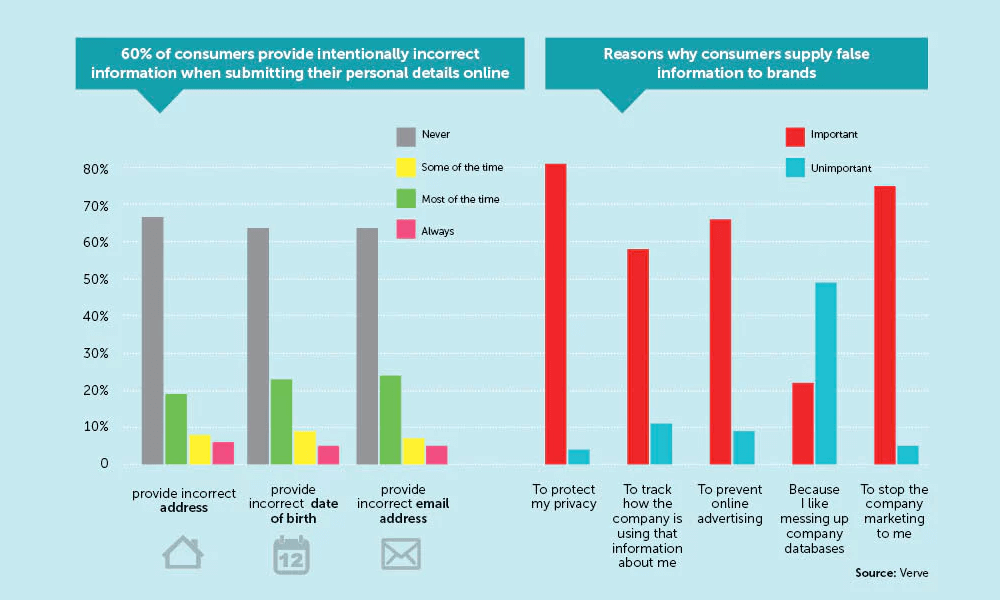
There are things you can do every day to drive your email list to new heights, and get a list that’s more likely to give you real, usable leads.
Working from a highly-targeted email list lets you focus on the leads with the highest relevance and value. Your business grows faster, your SDRs get more replies and more opens, and your AEs get more sales. Which is all great.
But how do you get the list in the first place?
There are a few ways to acquire a targeted email list. You can buy a list, or you can build one yourself by scraping from websites. But neither of those approaches is the best way to go. We’ll go over the right way to build a highly-targeted list in a moment, but first - what’s wrong with just buying one?
We’d always recommend leaving data acquisition and refining to the pros. You can work with your own data to some extent, but for lead generation, quality data acquisition is time-consuming, expensive and specialized, so it makes more sense to go to a provider.
Getting your data from a provider isn’t the same thing as buying a list of leads readymade, though. Data providers give you the data you need to construct a targeted list, and verify that data so you know you’ve got a real email address for your contacts. Buying a list means getting the whole thing, readymade. And it’s almost never a good idea.
A bought list almost never delivers. It’s a lot quicker and may even be cheaper than doing all the work you need to do to build your own list. But the ROI on that list will be smaller. As compared to a list you built yourself from the ground up, a bought list will almost always have lower ROI and generate a lower conversion rate. It may even damage your deliverability score or get you into trouble with your email provider. Building your own list is almost always better.
Bought lists put you into a legal gray area. Where do you stand in regard to GDPR, for instance? If anyone on your list is European, you’re relying on your list vendor to be GDPR compliant. Did they name your company when they collected the data on the list? If not, they’re not GDPR-compliant - and neither are you.
If your recipients are in the USA you don’t need their consent to send the first email, as long as you make it easy to unsubscribe at any time.

But on a bought list, they might have already asked to be removed from the list. If that’s the case, sending them an email puts you in violation of CAN-SPAM.
Bought email lists guarantee one thing: you spend some money and you have a lot of names. You sure do get size. But you don’t get quality. Even the best-bought list will tend to be worse in terms of targeting and data hygiene than the one you assemble yourself.
Email lists decay rapidly. Typically they’ll decay at about 22.5% annually or around 2% monthly. People change jobs and email addresses; companies change name or go out of business.
You can easily get some anecdotal evidence to back this up - look in your own inbox for a business contact you’ve had three or more years. Then imagine that you only had one email address for them - instead of five or six.
A bought list that’s two or three years old will have huge numbers of defunct contacts, which matters for all sorts of reasons - not least that it slashes your ROI and can damage your deliverability score.
Bought lists come from someone else’s email acquisition efforts and these are often suboptimal - to say the least. Faced with a piece of collateral they kind of want, and a compulsory form to get the piece of content, people fill that form in quickly, hurriedly, and often inaccurately. Sometimes they’re inaccurate on purpose. Other times, they just pick whichever multiple choice answer is kind of close enough and move on. Because they don’t really want to give that information at all.
Finally, email address quality can vary enormously. Most people have at least three email addresses and it’s common to have one that’s only really used for signing up to lists you don’t actually want to be on.
Say I have a list that I’ve made millions off. Why would I ever sell it to anyone? Great email lists aren’t for sale. And even they were, what works for someone else’s business might not generate those kinds of results for yours.
If you can’t buy a list, can you just brew up your own by searching and scraping? Probably not, unfortunately.
A few years ago, there was a huge market in tools that scraped LinkedIn and other sites. If you wanted to pick up email addresses from websites, you were spoiled for choice. Then, a couple of years ago, the landscape changed and all those tools disappeared.
So, what happened?
LinkedIn threw the law books at around 100 John Does. The outcome was that companies were allowed by the courts to scrape anonymously, but only from data posted publicly by users - which typically doesn’t include email addresses, or prospecting could just consist of reading email addresses off LinkedIn profiles. Information that was behind the scenes was no longer up for grabs.
Neither Microsoft (LinkedIn’s owner) or the data companies were happy with the result, but it’s where we are. Companies that once had LinkedIn auto-scraping plugins withdrew them hastily; the subjects of the lawsuit shuttered their data businesses.
LinkedIn’s efforts to prevent scraping are only arguably effective, since they don’t want to put all the data on their site behind credentials because it would damage their SEO. But they remain a good example of why scraping is a bad idea.
Most websites don’t want you scraping their data and many will put that stipulation in their user agreements. I’m not suggesting or recommending this, but if you grab a couple of email addresses, they might not notice. However, you obviously can’t base your business off violating the rules of a site, even if you wanted to.
A scrape that works by picking up a person’s first name, last name and company name and then tries to assemble an email address out of that information is called a ‘dictionary attack’ under the CAN-SPAM legislation and it’s illegal.
Even if collecting the email addresses is done in a legal way, sending unsolicited emails to harvested email addresses is a violation of CAN-SPAM.
The bottom line is that if you’re scraping, you’re breaking either the rules of the websites you rely on, or the law, or both.
Gathering emails for lead nurturing by marketing or direct contact by sales is often done by collateral-based signups. Give us your email address, and we’ll give you our white paper, ebook, video course, or other goodies.
Aside from the fact that leads generated this way often aren’t anything like sales-ready, there are a couple of other problems with this approach.
Too often marketers concentrate on getting maximum signups. That number jumps and they high-five each other. But to do it, they’re making it so you can hardly google your keywords without signing up for your newsletter.
Most people now know how to navigate this kind of website without agreeing to receive a barrage of spam. Normally you’ll get a second or third string ‘spam-catcher’ email address this way.

Good luck nurturing that. Sales messages to it just fall into a black hole.
If the content that’s being used to get signups is relatively generic you’re going to get generic leads. The result is a poorly-targeted list that’s hard to nurture or sell to. If you’re going to acquire signups from content, make it super closely targeted to funnel stage and area of interest. (Obviously this makes sense only if you’re doing inbound as well - a pure outbound strategy has to rely on other sources of email addresses.)
The best course of action is to leave the data mining and refining to the pros. Rather than trying to scare up email addresses yourself, it makes more sense to seek a data provider that has good coverage in your verticals.
If you want to be able to construct lists that carefully match your niche campaigns, the best resource will often be something your marketing or sales staff can search within, using either individuals’ names or other criteria such as role or industry.
This way, you can construct your own list, without having to actually source the email addresses yourself. At the same time, you don’t have the drawbacks of a bought list.
Instead, find a provider(s) who has good coverage in your verticals and if you run a lot of niche type campaigns often the best resource will be something your marketing or sales staff can run their own searches either for an individual or by criteria.
One way we’ll often see sales teams do it is to prospect directly on LinkedIn. Then when they’ve identified the individuals they want to contact, they’ll take that information to a data provider (us, in fact) and get direct mail and email from the data provider.
There’s a range of criteria you can search by - name, of course, but also job title, company, industry and a whole bunch more. The interface is designed to be account-based sales and marketing friendly, with options to specify contacts per account and other parameters.
Doing it this way means avoiding the dangers inherent in a bought list. You don’t have to scrape, so you avoid all those regulatory and legal pitfalls. You don’t have to rely on slow inbound or on marketing to supply leads. It’s the most powerful, versatile and simple way to quickly build a highly-targeted email list.
Opens, replies and conversions are all far more likely when sales work from a targeted list. But creating one by scraping or getting sign-ups against content collateral both come fraught with difficulties. And buying a list usually results in working from someone else’s worst list - their best one is never for sale.
The most effective solution is to identify a data provider that’s qualified to deliver in your verticals. Then, when you’re building a list for a campaign, you can do you own prospecting on LinkedIn and acquire direct mail and email contacts for those individuals from your data provider, delivering the tailored fit of a custom list and the speed, scalability and convenience of purchased data.

There are things you can do every day to drive your email list to new heights, and get a list that’s more likely to give you real, usable leads.

Without reliable access to accurate data, marketing aims at the wrong targets, sales and marketing can’t be effectively aligned and revenue and ROI suffer, meaning it’s...